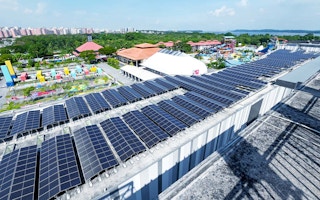Asia lags far behind Europe in renewable electricity capacity, and a key reason could be the way power markets are structured.
The inability of renewables firms to strike direct power purchase agreements (PPAs) with commercial customers in Asian countries is holding back the region’s clean energy transition, said Pedro Vasconcelos, Asia Pacific chief operating officer of Spanish power firm EDP Renewables (EDPR).
Electricity users pay suppliers fixed, pre-arranged prices in PPA agreements, generally in multi-year contracts. Such agreements involving solar and wind have in many cases been cheaper than buying power off national grids fed with fossil fuels, which in the past two years have seen wild price upswings.
At the same time, renewables developers are guaranteed returns, which also helps them convince investors to fund their construction of solar panels and turbines.
“The cost of solar has fallen tenfold since 2010, and we are expected to reduce it 50 per cent further by the end of the decade, so there’s no need for subsidies. The only requirement is to allow suppliers to connect to consumers through long-term stable pricing contracts,” Vasconcelos said.
Such corporate PPAs are not possible or heavily restricted in many Southeast Asian countries including Indonesia, Malaysia and Thailand, where only one state-owned utility firm is allowed to buy electricity from suppliers and distribute it into the national grid. Some jurisdictions may allow for rooftop solar panels to power the buildings they are built on, but not for facilities to sign PPAs with larger offsite renewable facilities.
Vietnam has been looking at green-lighting corporate PPAs for over two years, but a promised pilot program has been delayed repeatedly and may now only start early next year. China is piloting such schemes in some provinces.
Wholesale power markets that provide visibility of spot electricity prices will also be important, as they allow consumers to better grasp the price savings that renewables provide, Vasconcelos said.
Only Singapore and the Philippines have well-developed wholesale markets in Asia, according to a 2020 report by Hong Kong-based consultancy Lantau Group.
A single-buyer system helps promote infrastructure development and makes it easier for governments to enact policies, a study by the Economic Research Institute for ASEAN and East Asia had said in 2015.
Liberalising electricity grids remains a technical issue, said Dr David Broadstock, senior research fellow at the National University of Singapore’s energy studies institute.
“I think it is fair to say that the single buyer arrangement is not preferred. Fundamentally, the idea of a multiple buyer arrangement has merit in many ways, but the complexity of realising those merits is not to be ignored,” he said, adding that such arrangements will require technology like smart meters, fast computers and two-way transmission systems.
Asian power markets may start trialling such equipment within 10 years, but large scale peer-to-peer electricity trade would likely take longer, Broadstock said.
Regional grids
A well-developed regional grid will help improve energy resilience in Asia, and open up more opportunities for the development of renewables, Vasconcelos added.
A Southeast Asia-wide power grid has been in the works for 25 years, but cross-border electricity trade has thus far mostly involved Laos selling its abundant supply of hydropower to its neighbours. Singapore joined this trade in June.
Singapore has been seeking proposals to import 30 per cent of its electricity from low-carbon sources in the region, but the plan has been rebuffed by export bans on renewables from Malaysia and Indonesia.
Local governments need to “see that the industry is there and is ready to support” regional clean energy trade, Vasconcelos said.
A rise in “energy nationalism” will make geopolitical negotiations harder, Broadstock said. The past two years have been marked by conflicts in energy trade, due to both Russia’s invasion of Ukraine and soaring energy demand after Covid-19 lockdowns. However, the effect on renewables would be mitigated by stronger climate ambitions overall, Broadstock added.
Vasconcelos was providing business updates for EDPR at a media event on Thursday (8 September). He said the firm is expected to secure one gigawatt of wind and solar capacity in Asia Pacific by the end of the year, up from about 0.7 gigawatts today.
The firm announced a US$284 million purchase of two solar projects in Vietnam totalling 200 megawatts from Vietnamese firm Xuan Thien Group.
EDPR is the fourth-largest renewable energy producer globally. It acquired a majority stake in Singapore solar firm Sunseap earlier this year to grow its Asian presence, and has said it would invest up to S$10 billion (US$7 billion) in Singapore by 2030.










